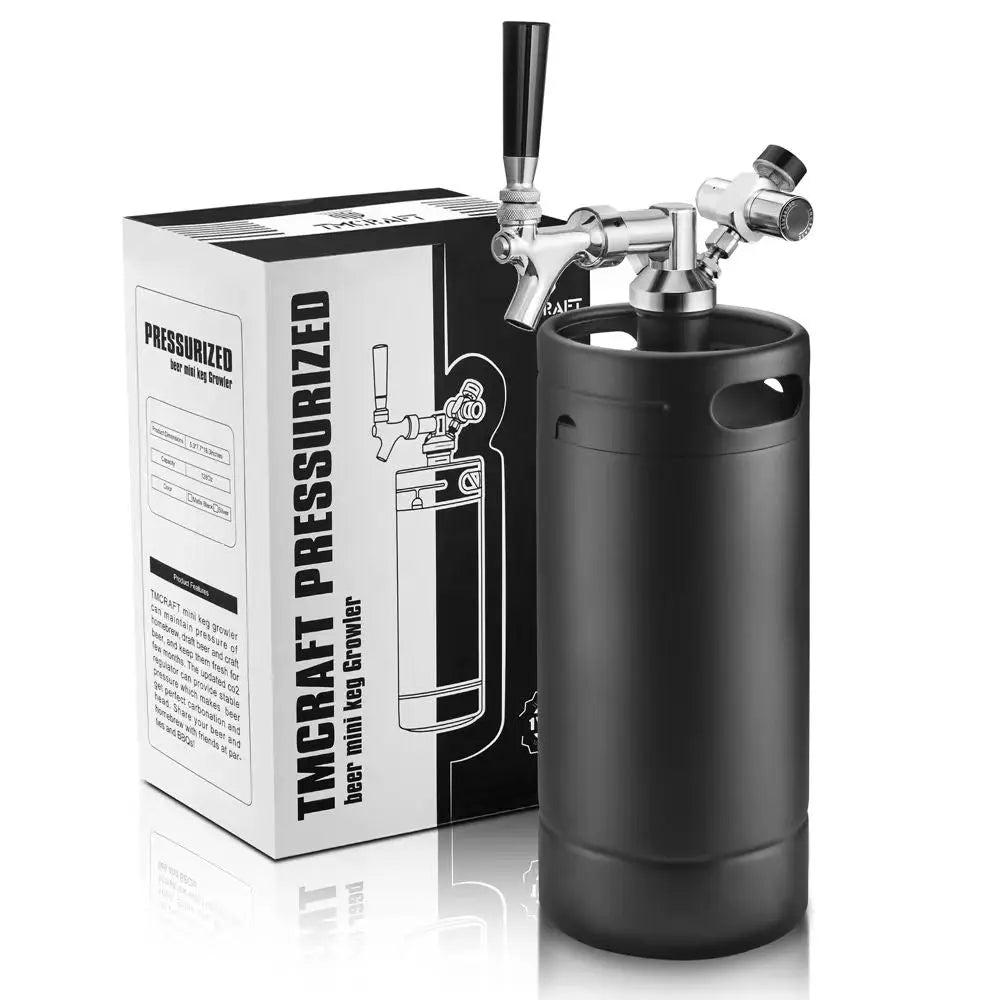
How to mini keg to carbonate homebrew
Carbonating homebrew in a mini keg is a great way to enjoy fresh, draft beer at home. Here’s a step-by-step guide on how to do it:
1. Clean and Sanitize the Keg
- Clean: Make sure your mini keg is thoroughly cleaned to remove any residue or bacteria. Use a non-abrasive cleaner.
- Sanitize: After cleaning, sanitize the keg and all associated equipment (such as the bung and spout) using a no-rinse sanitizer.
2. Fill the Keg with Homebrew
- Transfer your finished homebrew from the fermenter to the mini keg. Be careful not to introduce too much oxygen, as this can lead to oxidation and off-flavors.
- Leave a small amount of headspace at the top (about an inch or so) for carbonation.
3. Priming for Natural Carbonation (Optional)
- Add Priming Sugar: If you want to naturally carbonate the beer (like bottle conditioning), add priming sugar to the beer in the keg. The amount is typically around 1 oz (28 g) per gallon, but it can vary depending on the desired level of carbonation.
- Seal the Keg: Secure the keg with the bung or cap and store it in a warm place (around 70°F or 21°C) for 1-2 weeks to allow carbonation to build.
4. Force Carbonation (Optional)
If you have access to a CO2 tank, you can force carbonate your beer. This method is quicker and allows for better control over carbonation levels.
- Chill the Keg: Place the filled keg in the fridge to cool the beer to serving temperature (usually 38-45°F or 3-7°C). Cold beer absorbs CO2 more efficiently.
- Connect CO2: Attach the mini keg to a CO2 regulator and set the pressure to 10-15 PSI.
- Shake the Keg (Optional): To speed up carbonation, gently shake the keg for 5-10 minutes while the CO2 is connected. This increases the surface area contact between the beer and the gas.
- Let it Sit: After shaking, let the keg sit under pressure for 24-48 hours to fully carbonate. Adjust the pressure as needed for your desired carbonation level.
5. Serve and Enjoy
- Once carbonated, your mini keg is ready to serve. Attach the tap or spout, reduce the CO2 pressure (if using force carbonation) to around 5-8 PSI, and pour yourself a glass of your homebrew!
6. Storage and Maintenance
- Keep the keg refrigerated if not serving immediately. If using CO2, ensure the pressure is maintained at serving levels to keep the beer carbonated.
Following these steps will help you properly carbonate your homebrew in a mini keg, ensuring a fresh, fizzy drink when you're ready to enjoy it.

